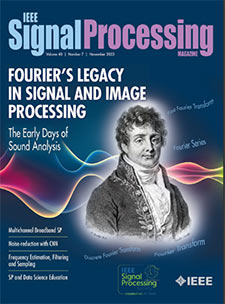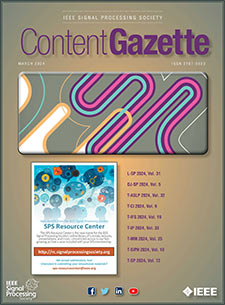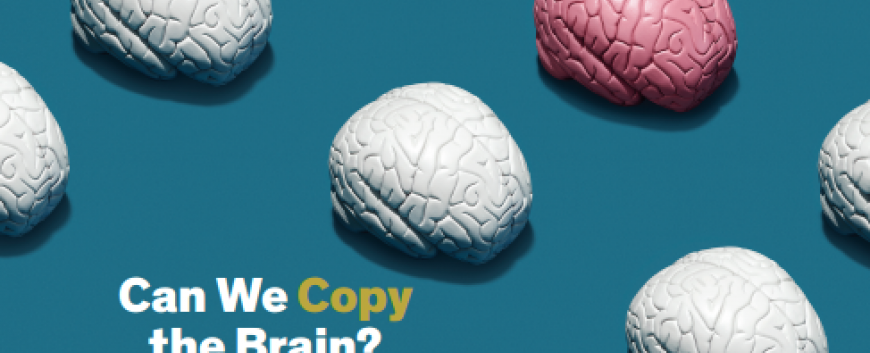- Our Story
- Publications & Resources
- Publications & Resources
- Publications
- IEEE Signal Processing Magazine
- IEEE Journal of Selected Topics in Signal Processing
- IEEE Signal Processing Letters
- IEEE/ACM Transactions on Audio Speech and Language Processing
- IEEE Transactions on Computational Imaging
- IEEE Transactions on Image Processing
- IEEE Transactions on Information Forensics and Security
- IEEE Transactions on Multimedia
- IEEE Transactions on Signal and Information Processing over Networks
- IEEE Transactions on Signal Processing
- IEEE TCI
- IEEE TSIPN
- Data & Challenges
- Submit Manuscript
- Guidelines
- Information for Authors
- Special Issue Deadlines
- Overview Articles
- Top Accessed Articles
- SPS Newsletter
- SigPort
- SPS Resource Center
- Publications Feedback
- Publications FAQ
- Blog
- News
- Dataset Papers
- Conferences & Events
- Community & Involvement
- Professional Development
- For Volunteers
- Information for Authors-OJSP
-
Home
Conferences14 April 2025 to 17 April 2025Conferences Events IEEE JSTSP Article IEEE Signal Processing Magazine IEEE TIFS Article IEEE TMM Article IEEE TSP Article Jobs in Signal Processing Lectures Machine Learning Seasonal Schools Signal Processing News SPM Article SPS Distinguished Lectures SPS Newsletter Article SPS Webinar SPS Webinars SPS Webinar Series Webinar webinars
-
Our Story
What is Signal Processing?

The technology we use, and even rely on, in our everyday lives –computers, radios, video, cell phones – is enabled by signal processing. Learn More » -
Publications & Resources
-
SPS Resources
- Signal Processing Magazine The premier publication of the society.
- SPS Newsletter Monthly updates in Signal Processing
- SPS Resource Center Online library of tutorials, lectures, and presentations.
- SigPort Online repository for reports, papers, and more.
- SPS Feed The latest news, events, and more from the world of Signal Processing.
-
SPS Resources
-
Conferences & Events
-
Community & Involvement
-
Membership
- Join SPS The IEEE Signal Processing Magazine, Conference, Discounts, Awards, Collaborations, and more!
- Chapter Locator Find your local chapter and connect with fellow industry professionals, academics and students
- Women in Signal Processing Networking and engagement opportunities for women across signal processing disciplines
- Students Scholarships, conference discounts, travel grants, SP Cup, VIP Cup, 5-MICC
- Young Professionals Career development opportunities, networking
- Get Involved
-
Technical Committees
- Applied Signal Processing Systems
- Audio and Acoustic Signal Processing
- Bio Imaging and Signal Processing
- Computational Imaging
- Image Video and Multidimensional Signal Processing
- Information Forensics and Security
- Machine Learning for Signal Processing
- Multimedia Signal Processing
- Sensor Array and Multichannel
- Signal Processing for Communication and Networking
- Signal Processing Theory and Methods
- Speech and Language Processing
- Technical Working Groups
- More TC Resources
-
Membership
-
Professional Development
-
Professional Development
- Mentoring Experiences for Underrepresented Young Researchers (ME-UYR)
- Micro Mentoring Experience Program (MiME)
- Distinguished Lecturer Program
- Distinguished Lecturers
- Distinguished Lecturer Nominations
- Past Lecturers
- Distinguished Industry Speaker Program
- Distinguished Industry Speakers
- Distinguished Industry Speaker Nominations
- Industry Resources
- IEEE Training Materials
- Jobs in Signal Processing: IEEE Job Site
-
Career Resources
- SPS Education Program Educational content in signal processing and related fields.
- Distinguished Lecturer Program Chapters have access to educators and authors in the fields of Signal Processing
- PROGRESS Initiative Promoting diversity in the field of signal processing.
- Job Opportunities Signal Processing and Technical Committee specific job opportunities
- Job Submission Form Employers may submit opportunities in the area of Signal Processing.
-
Professional Development
-
For Volunteers
-
For Board & Committee Members
- Board Agenda/Minutes* Agendas, minutes and supporting documentation for Board and Committee Members
- SPS Directory* Directory of volunteers, society and division directory for Board and Committee Members.
- Membership Development Reports* Insight into the Society’s month-over-month and year-over-year growths and declines for Board and Committee Members
-
For Board & Committee Members
Popular Pages
Today's:
- Submit a Manuscript
- Information for Authors
- (MLSP 2024) 2024 IEEE International Workshop on Machine Learning for Signal Processing
- IEEE Transactions on Multimedia
- (SLT 2024) 2024 IEEE Spoken Language Technology Workshop
- IEEE Transactions on Image Processing
- (ISBI 2025) 2025 IEEE International Symposium on Biomedical Imaging
- IEEE Transactions on Information Forensics and Security
- (ICASSP 2024) 2024 IEEE International Conference on Acoustics, Speech and Signal Processing
- IEEE/ACM Transactions on Audio Speech and Language Processing
- IEEE Signal Processing Letters
- Conference Call for Papers
- Information for Authors-SPL
- Conferences & Events
- (ICASSP 2025) 2025 IEEE International Conference on Acoustics, Speech and Signal Processing
All time:
- Information for Authors
- Submit a Manuscript
- IEEE Transactions on Image Processing
- 404 Page
- IEEE/ACM Transactions on Audio Speech and Language Processing
- IEEE Transactions on Information Forensics and Security
- IEEE Transactions on Multimedia
- IEEE Signal Processing Letters
- IEEE Transactions on Signal Processing
- Conferences & Events
- IEEE Journal of Selected Topics in Signal Processing
- Information for Authors-SPL
- Conference Call for Papers
- Signal Processing 101
- IEEE Signal Processing Magazine
Last viewed:
- (ICASSP 2025) 2025 IEEE International Conference on Acoustics, Speech and Signal Processing
- (DCC 2024) 2024 Data Compression Conference
- (SLT 2024) 2024 IEEE Spoken Language Technology Workshop
- (WIFS 2024) 2024 IEEE International Workshop on Information Forensics and Security
- (ME-UYR) Mentoring Experiences for Underrepresented Young Researchers Program
- Call for Project Proposals: IEEE SPS ME-UYR Program - Mentoring Experiences for Underrepresented Young Researchers
- Micro Mentoring Experience Program
- Call for Mentors: 2024 IEEE SPS ME-UYR Program - Mentoring Experiences for Underrepresented Young Researchers
- Conference Call for Papers
- EDICS
- (ICME 2024) 2024 IEEE International Conference on Multimedia and Expo
- Submit a Manuscript
- IEEE/ACM Transactions on Audio Speech and Language Processing
- Information for Authors-SPM
- IEEE Transactions on Image Processing
Newsletter Menu
Newsletter Categories
Top Reasons to Join SPS Today!
1. IEEE Signal Processing Magazine
2. Signal Processing Digital Library*
3. Inside Signal Processing Newsletter
4. SPS Resource Center
5. Career advancement & recognition
6. Discounts on conferences and publications
7. Professional networking
8. Communities for students, young professionals, and women
9. Volunteer opportunities
10. Coming soon! PDH/CEU credits
Click here to learn more.
News and Resources for Members of the IEEE Signal Processing Society
Can We Copy the Brain?
In the mid-1940s, a few brilliant people drew up the basic blueprints of the computer age. They conceived a general-purpose machine based on a processing unit made up of specialized subunits and registers, which operated on stored instructions and data. Later inventions—transistors, integrated circuits, solid-state memory—would supercharge this concept into the greatest tool ever created by humankind. So here we are, with machines that can churn through tens of quadrillions of operations per second. We have voice-recognition enabled assistants in our phones and homes. Computers routinely thrash us in our ancient games. And yet we still don’t have what we want: machines that can communicate easily with us, understand and anticipate our needs deeply and unerringly, and reliably navigate our world. Now, as Moore’s Law seems to be starting some sort of long goodbye, a couple of themes are dominating discussions of computing’s future. One centers on quantum computers and stupendous feats of decryption, genome analysis, and drug development. The other, more interesting vision is of machines that have something like human cognition. They will be our intellectual partners in solving some of the great medical, technical, and scientific problems confronting humanity. And their thinking may share some of the fantastic and maddening beauty, unpredictability, irrationality, intuition, obsessiveness, and creative ferment of our own. In the special issue of IEEE Spectrum, June 2017, the editors consider the advent of neuromorphic computing and its prospects for ushering in a new age of truly intelligent machines. It is already a sprawling enterprise, being propelled in part by massive research initiatives in the United States and Europe aimed at plumbing the workings of the human brain. Parallel engineering efforts are now applying some of that knowledge to the creation of software and specialized hardware that “learn”—that is, get more adept—by repeated exposure to computational challenges. Glenn Zorpette. Can We Copy the Brain. IEEE Spectrum. 2017 June.
Open Calls
Conference News
Chapter & DL News
PhD Theses
- Zhu, Zhenghan. University of Rhode Island (2017)"Some Contributions to Radar Detection Theory"
- Kaewtip, Kantapon. University of California, Los Angeles(2017)"Robust Automatic Recognition of Birdsongs and Human Speech: a Template-Based Approach"
- Hossein Bashashati, University of British Columbia (2017) "A User-Customized Self-Paced Brain Computer Interface"
- Tralie, Christopher J.. Duke University(2017) "Geometric Multimedia Time Series"
- Jang, Hyungseok. (The University of Wisconsin - Madison), "Advances in Single Point Imaging for Electron Paramagnetic and Magnetic Resonance Imaging” (2017)
- Wisler, Alan. Arizona State University, (2017) "Graph-based Estimation of Information Divergence Functions"
Member Highlights
News & Announcements
Initiatives & Trends
Education & Resources
SPS on Twitter
- DEADLINE EXTENDED: The 2023 IEEE International Workshop on Machine Learning for Signal Processing is now accepting… https://t.co/NLH2u19a3y
- ONE MONTH OUT! We are celebrating the inaugural SPS Day on 2 June, honoring the date the Society was established in… https://t.co/V6Z3wKGK1O
- The new SPS Scholarship Program welcomes applications from students interested in pursuing signal processing educat… https://t.co/0aYPMDSWDj
- CALL FOR PAPERS: The IEEE Journal of Selected Topics in Signal Processing is now seeking submissions for a Special… https://t.co/NPCGrSjQbh
- Test your knowledge of signal processing history with our April trivia! Our 75th anniversary celebration continues:… https://t.co/4xal7voFER
Home | Sitemap | Contact | Accessibility | Nondiscrimination Policy | IEEE Ethics Reporting | IEEE Privacy Policy | Terms | Feedback
© Copyright 2024 IEEE – All rights reserved. Use of this website signifies your agreement to the IEEE Terms and Conditions.
A not-for-profit organization, IEEE is the world's largest technical professional organization dedicated to advancing technology for the benefit of humanity.








